We have begun a compilation of research and information to respect fallen comrades of the 21st century.
Genocide, murder, and death are inherent to the system of domination and exploitation we oppose. We extend solidarity with the excluded and exploited humanity at every level. No lost life due to the suffering of capitalism should be forgotten as we yearn for a free society without measure.
The intention with this is to reify some of our recent histories as anarchists, subversives, and actively discontent people against the state and capitalism.
We can never rely on those who control history to recount for those who have died or been murdered resisting them.
This is a project we consider to be both complicated and sensitive, however indispensable.
This is a project we approach with feelings of passionate solidarity, deep humility, and respect.
We prefer to be a ‘we’ without a pen name or an author without an isolating identity. We prefer to be an anonymous coordinator of content. An understood and trusted passionate source for preserving our tension and position before this ever-encroaching modern society that continues to amaze the world with its volatility.
We prefer to represent a spirit of lively and passionate discontent for the society that plagues the earth and excludes or exploits the majority of us upon it.
We prefer to be writing words of shared feeling, and while our solidarity goes beyond any political identity (being rooted in conscious or unconscious discontent), our spirit and approach to this world can most easily be defined as an anarchist one.
Throughout the 20th century, the centrists and right have tried to eradicate those dedicated to liberatory discourse and action. Throughout history, this has been the case.
We have some remnants of our history from the few who were able to survive the various types of repression across the world. But we are certain there are many beautiful and inspiring people that go unknown.
Anarchy, revolution, or subversion against the totality of society is not a picnic. We are choosing even if in our asserted stance alone, to claim a position that is the most intense enemy of all domination. Wherever we find ourselves in the west or east if we are breathing with such discontent within the borders of a nation-state our thoughts, passions, and feelings are a target for repression.
Whether directly or indirectly by the hands of the state, the individuals mentioned in this project have died as anarchists or revolutionaries that have inspired the tension that binds our solidarity against all facets of domination, division, and exploitation.
Some of those mentioned here have made the ultimate sacrifice in the struggle. Some of those mentioned here have died with a heart that preserves a desire for liberation. Some of those mentioned were sparks that ignited wildfires of social unrest and liberatory determination.
Our enemies would like to see such hearts frozen over with the coldness of authoritarian or self-defeating psychology. They would like the memory of those lost eradicated; cause memory is essential in preserving the lives of those lost, as well as strengthening a movement to appreciate its’ significance.
Those mentioned here deserve a formal recognition, which this is meant to be.
We are equally overwhelmed as we are nervous to organize this. It is not only a deeply sensitive subject, but there are so many to consider, and with all the effort and love involved here, we are already certain someone should have been included who won’t initially be.
Additionally establishing guidelines for whom to include is a project in itself.
With determining who to include, we are choosing those who died as self-proclaimed anarchists, anti-statists/capitalists, or individuals who died by the hands of the state that sparked tensions and uprisings that included or inspired the anarchist movements of the world.
We have made it a priority to consult multiple comrades of different backgrounds and perspectives within the anarchist movement.
We hope to respectfully mourn those mentioned here, while intently inspiring those reading these biographies to fight in their memory, remember their beauty, and celebrate the spirit of solidarity that goes beyond the grave.
This is a project for unity among anarchists, the discontent, and sympathetic subversives. We hope it will remind some as to where our true struggles belong, and our responsibility to continue our movements in the name of those who have fallen.
We truly hope that this project is appreciated, and those reading note that from the beginning we have taken into consideration the importance of both sensitivity and humility in every part of this process.
With that said, we believe we have only begun this project. We are presenting this both as an explanation and an announcement. We are asking for suggestions and contributions to those mentioned. Our guidelines have been stated but of course, have grounds to adapt or grow. Additionally, natural circumstances can also sadly lead to the extension of this list as well, but we hope to turn this into a base for recognizing our shared losses in our revolutionary history. Our long term goal is also to have this be a syndicated research project to remember those of the anarchist tension lost from our humanity and movement. We hope to eventually also compile a book of remembrance which is not at the mercy of the internet. At the point this announcement is made public, we hope the response will help us better retain our project’s goals. Please send biography contributions for listed individuals, and suggestions for unaccounted for individuals to include in the list to the following contact:
Our passion for freedom is one that is shared at the heart of most of our humanity, and should not die even with our deaths.
Love, solidarity, and respect,
-Anonymous Anarchists
Do Not Forget the Living Behind Bars!
“A movement that does not support its prisoners is a shame movement.” -Ojore N. Lutalo
Supporting our political prisoners is of the utmost importance to us. We must always preserve passion and dedication to letting those behind bars know they are not forgotten. This is of the utmost ethical importance as revolutionaries, as well as a historically strategic element of revolutionary communities to prevent snitching, state calculated division, and to create networks of support that help to regulate our fear before state campaigns of political terror and repression.
Beyond this project we have spent years trying to raise awareness and resources for those in prison, and will conclude this introduction with ways to find out more on supporting prisoners, and taking steps towards a direction of revolutionary solidarity.
Please consult some of the following projects for more updated information on state repression across the world:
https://actforfree.nostate.net/
https://en-contrainfo.espiv.net/category/state-repression/
Fallen Comrades:
Organized in Chronological Order
Carlo Giuliani / July 2001 / Genoa, Italy
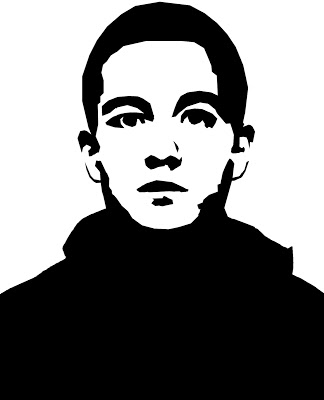
From WikiPedia:
During an anti-globalization demonstration outside the July 2001 G8 summit in Genoa, Italy, protester Carlo Giuliani was shot dead by riot police as he and other demonstrators attacked their van, making his the first death during an anti-globalization demonstration since the movement‘s rise from the 1999 Seattle WTO protests. Photographs showed Giuliani, a 23-year-old Roman living in Genoa, throwing a fire extinguisher towards the van, a pistol firing a shot in return from the van, and Giuliani’s body having been run over by the van. Charges against the officer were initially dropped without trial as a judge ruled that the ricocheted bullet was fired in self-defense, but the incident became a point of public scrutiny. The European Court of Human Rights, eight years after the incident, ruled that the Italian forces had acted within their limits, though damages were awarded for the state’s procedural handling of the case. Appeals held the ruling, and Giuliani’s family later filed a civil suit. Giuliani was memorialized in music tributes and public monuments, and is remembered as a symbol of the 2001 G8 protests. The 2002 documentary Carlo Giuliani, Boy, recounts the incident.
Brad Will / October 2006 / Oaxaca, Mexico
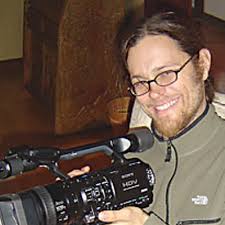
From WikiPedia:
Bradley Roland Will (June 14, 1970 – October 27, 2006) was an Americanactivist, videographer and journalist. He was affiliated with Indymedia. On October 27, 2006 during a labor dispute in the Mexican city of Oaxaca, Will was shot twice, by government-aligned paramilitaries, resulting in his death.
Sally Grace / September 2008 / Oaxaca, Mexico

From Fire to the Prisons Issue #4:
Anonymous Friend of Sally Grace:
About one month ago, I was told that some-one I might know was killed in Oaxaca, Mexico. When first described, it was hard to put all the pieces together, but I was slightly disturbed by the familiarity of the description. Sally Grace was murdered almost two years after my other friend Brad Will was murdered, both were in Oaxaca to doc-ument and aid the insurrection and general people’s revolt that has been occurring for sometime now. Sally was work-ing to keep radicals in North America aware of what was going on with the struggles there, she took responsibility for helping to document daily life among the resistance, and translate updates of the Popular Indigenous Council (CIPO), Ricardo Flores Magon, and the APPO of Oaxaca for Arizona’s Indy media. When traveling to the states from Oaxaca she would hold events to help strengthen solidarity with radicals in the states and the indigenous resistance of Oaxaca, she also would use her trips to the states as a way to raise funds for the uprising. Sally was a dedicated person of dissent, and an inspiration to us all. My memories of Sally was that of a person of sincere kindness and lack of judgment. An empowered young women, whose presence could not be ignored. She stayed with me when I was 17 years old liv-ing on the west coast, and I remember her general manner of consideration, and willingness to help. She was unique from the other “traveler punks” I remember were around at the time, unique in the way that she was responsible, strong willed, and passionate about life. I actually hold her as a source for getting my “shit together”. Her passion, her courage, her will, her life, will all be an inspiration to me. She died a revolutionary life, she died never selling out to her heart, and she died among a struggle that aims to elimi-nate the world Sally existed separate of. We mourn Sally’s death, but we want her to live on, in the struggles of Oaxa-ca, in the dedication of her comrades, and in the solidarity we have with all lives that look to break the shackles of this death-culture. Since the demands of anonymous friends of Sally to find her rapist and murderer, a man named Yoguez Singu was arrested after his friends were suspicious of his behav-ior after her investigation was made public. Oaxacan ac-tivists actually were the first told of this man, and went to Mexico City to remand him themselves. After, they sched-uled a meeting with police at a supermarket to hand him over. We wish others who were friends of Sally to make her death more public, and let others know of the kind person she was. Sally’s courage and strength as a fearless wom-an, her grace and warmth as a passionate individual, and her dedication to aiding this insurrection, must live on in the inspiration of her memory..
Forever live on in memory.
Also look at:
www.indybay.org/newsitems/2008/09/26/18541460.php
Harold H. Thompson / October 2008 / West Tennessee State Penitentiary, USA
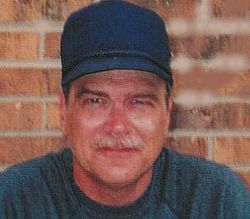
From Fire to the Prisons Issue #5:
Long time prisoner and jailhouse lawyer and activist Harold H. Thompson died Tuesday November, 11th of heart failure. Harold was born in 1942 to Irish parent in West Virginia, USA was an anarchist activist during the 1960s and 1970s. His exploits, including expro-priation of capital to fund further activities, landed him in prison on more than on occasion over the years. In 1978 however the mother of one of his children was brutally murdered by a man named Crawley who was soon released after agreeing to turn states evidence. After his release he heard bragging in a bar that he was going to kill Harold’s child and the other child who had testified against him. He was within a few day shot in a bar by a masked assailant who escaped unidentified. Harold was the natural suspect and was after a brief manhunt arrested and sentenced to life plus fifty. In his time inside he has been a fearless activist and prison house lawyer.
An anarchist remembers Harold and their last visit together:
Last summer, on August 2nd, me and a friend went to visit Harold in Henning, Tennes-see, at the West Tennessee State Penitentiary. It was typical a summer day in Tennes-see: sunny and over 100 degrees. Also typical were the guards: distracted, unhelpful, disorganized, and certainly not concerned about the broken water pipe that had left the whole prison dry, or the crowds of people that it was preventing from their visits. It was a Saturday and many people had come to see friends and family members there. After navigating the guards, and waiting hours we were in. We walked through the huge visiting room, which was unusually empty on account of the water being out, and went to the back corner where people waited to have visits in the non-contact rooms. We showed them our id’s and the ticket we were given at check in and they called on the radios for Harold to be sent out for a visit. After a few minutes of anxious waiting, we were led to an open room, with a table and chairs in it. The guard didn’t say anything then left. I looked around the room then met the also curious eyes of my company, wondering why we were not in a non contact visit room like usual. Before a moment passed Harold walked in I had visited Harold quite a few times and written him for years but never stood in the same room as him nor without an inch thick plexiglass between us. For the past twenty five years non-contact visits were the only visits Harold had experienced. We all shook hands, I wanted to hug him but the screw in the next room would not allow it. We were left alone and settled into a very warm and wonderful visit.
Before anything else he asked about us. Harold was a very caring man, always interest-ed and supportive of his friends. He wanted to know how different projects and our lives were going. We talked about the anarchist movement, our summer travels and news. Har-old updated us on his cell mate situation (they were always putting Nazis in his cell), his health, and the lawsuit he had filed against the prison. Also as in every other visit Harold loved to tell stories of escapes and fighting for freedom. One time Harold and three other prisoners rushed some screws, taking them hostage, and occupying a section of the prison. I remember his intensity as he told us how in the ensuing fight one prisoner and one guard were killed. The mood lightened and a boyish smirk developed on his face. He told us a story about jumping off the back of a moving work truck shackled to a friend of his. Ap-parently they ran like hell despite Harold’s two sprained ankles. Harold started laughing then and said ”the thing about sprained ankles is that they don’t hurt or swell until you stop running, so don’t ” He ran so fast it took months before he was found again. Every time he told a story of escape you think it has to be the last, but there is always another-not to mention the one up his sleeve. He spoke of being on the lamb in Mexico and how he missed the culture and food south of the border. To his excitement, Harold’s poems and writings can be found translated into Spanish in anarchist newspapers and zines. As quickly and unexpectedly as the visit had begun, it was over. The guard came in and said that because of the water pipe we only had one hour, and that it was up. I held his hand in both of mine and caught his eyes. We said our good byes and walked off. From the car we watched as he was lead around the compound and back inside. When we heard of his passing four months later, despite immense grief for our friend and comrade it was relieving to know that he was free. Harold had told us, as he had in every other visit, about how when he died his body was going to be cremated and spread in his family’s home-town in Ireland. That wish has been carried out.
Alexis Grigoropoulos / December 2008 / Athens, Greece
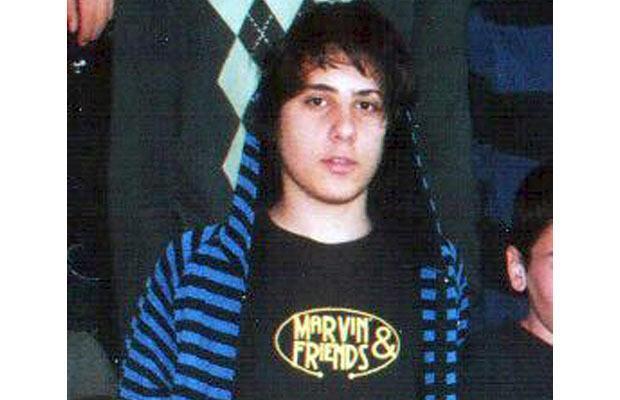
The fatal shooting that triggered the riots and protests took place in the evening of 6 December 2008, shortly after 9 pm, in the Exarcheia district of central Athens.
From WikiPedia:
According to press reports,[14] two Special Guards (Ειδικοί Φρουροί) (a special category of the Greek police personnel, originally meant for guard duties on public property)[15] had been engaged in a minor verbal clash with a small group of teenagers in a main street of Exarcheia, outside a shop. On driving away in their police car, they were then confronted by another small group at a nearby street crossing. The two guards were ordered by the Greek police center of operations to disengage immediately and withdraw from the confrontation site.[16] However, the two guards did not comply and were later accused of insubordination.[17] Instead, the two special guards chose to station their police vehicle outside the PASOK headquarters, left the car and went to Tzavella Street on foot, in order to confront the youngsters.
Following some exchange of verbal abuse that, according to several witnesses, was initiated by the guards,[18][19] one of them, Epaminondas Korkoneas, fired his gun. The initial police’s report on the incident claims that the special guard shot in response to a renewed attack by the youths, that involved throwing stones and bottles.[20][21] Eyewitnesses who spoke to Greek media, however, reported that the special guards were not attacked by the youths, nor was their physical safety put in danger at any time. Instead, the special guards approached the group and verbally assaulted them in order to provoke them.[22][23] The special guard said he fired three rounds, two warning shots in the air and a third aimed on the ground. Several eyewitnesses said they believed the policeman had directly targeted the youngsters.[24][25][26]
The victim, Alexandros – Andreas Grigoropoulos (Greek: Αλέξανδρος – Ανδρέας Γρηγορόπουλος) was a 15-year-old student anarchist. Immediately following the shooting, he was transported to the nearby Evangelismos Hospital where he was pronounced dead.
Andrea Scamihorn / December 2008 / Santiago, Chile
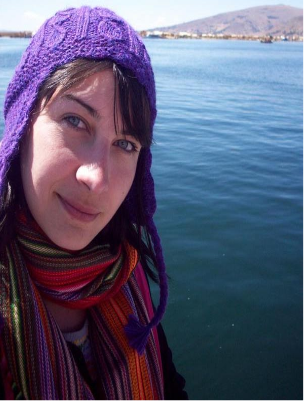
From Fire to the Prisons #5:
Indiana antifascist Andrea Scamihorn passed away December 19th in her Santiago, Chile apartment from carbon monoxide poisoning just days before she was to return to the states. She was only 25 years old.Andrea, formerly of Muncie Anti-Racist Action, got involved at a fairly young age. She started doing anti-racist grass roots organizing in rural Indiana at a time when most people considered it to be an extremely dangerous place to stand up to white supremacist movements. But she not only endured, but lead and was part of dozens of successful campaigns over the years. She worked underground gathering in the years after ARA was a fashionable college thing in her town and she had deal with boneheads such as the Outlaw Ham-merskins and the Vinlanders Social club setting up shop literally across the street from her day job. She was “always ready for the tough stuff and never ran.” One friend of hers has said, “Andrea was one of the very best amongst us. We should all hope to be so brave and so dedicated and so full of life and so positive.”
Mauricio Morales / May 2009 / Santiago, Chile
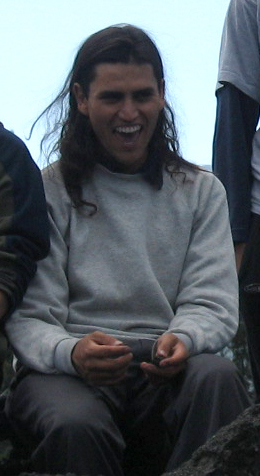
From Fire to the Prisons Issue #6:
“It was a whiplash in the heart and stomach. Our brother died in combat; surpassing his fear and comfort, and facing his enemies… Burn what little we have for ourselves; for we can lose nothing because nothing belongs to us. We never said that the fight was easy, and sometimes results are scarce. We do not always get the goals we are proposing; some-times our enemies win the game. But the struggle has demonstrated that this their system is vulnerable. Despite our fear we want to destroy all social control; their guardians of law and order… And you Mauri, we give you a moment of silence and a life of struggle. Do not forget. Do not forgetNor forgive.”
-Taken from “Black Plague”; a publication written in response to Mauricio’s death.
Early in the Morning of May 22nd in Santiago, Chile, Mauricio Morales, a 27 year old anarchist, was killed by an explosive device he was carrying in his bag. He will be respected by all those who shared his feelings; his memory will be fostered in years of resistance to come. Maurico’s death has sparked mourn-ing and rage across the world. The average schmuck would respond to such news saying; “what an idiot”, or even more offensive; “he did this to himself”. We respond with a feeling a repulsion and a saddend-ed rage. Maurico died engaged in a war. When you are responsible for the trajectory of your resistance; when you are responsible for keep-ing a feeling of social tension with the state alive; you assume respon-sibility for the knowledge required to do so. The military or police are provided with specialists in bomb and weapon development; as well as an unlmitied supply of funding to explore such skills. Maurico is fighting the system that sanctions the military and police; Maurico, unlike the military and police is only funded by a passion for anoth-er world; and only equipped with misc. resources available for poten-tial “re-production” by civilizans. This tragic mistake will be humili-ated by the mainstream, but it is our responsibility to counter such ma-nipulations. He did not “do” this to himself. The state’s existence drove Mauricio to act. He chose to not be victimized; and instead confront the perpitrator.
Bomb attacks claimed by Anarchists are frequent in Chile, and even prior to his death Mauricio’s name was mentioned by those investigating some of these attacks. Small acts of sabotage such as these are usually done without inflicting injury and always against eithergovernment or business infrastruc-ture. The bomb Mauricio was car-rying was a fire extingusiher filled with gun powder; the police claim he was intending to attack the School of Prison Guards; within the vicinity of the schoolat 1:30 am; he died. The Chilean government rarely catches those responsible; unfortunately Mauricio is an excep-tion. Surveillance footage claims to identify another hooded individual running from the scene when Mau-ricio died. The state is responding with escalating repression. Since Mauricio’s death; raids have been conducted on the homes of his fam-ily, and squats across Santiago. Threats of eviction and prosecution against the squats associated with Mauricio and individuals living there are coming out through fabri-cated state evidence and the support of mainstream media. La Idea is the social space most effected; this downtown Santiago squat has sent a call out to the world for solidarity. The Chilean state and media are try-ing to make a mockery of our fallen comrade; let us make a mockery of them.
If Mauricio made it to his location; prisoners across the world may have have felt avenged; individuals across the world may have have been inspired; and a future generation of police may have witnessed a warning of coming attacks.
Ivan Khutorskoy / November 2009 / Moscow, Russia

From News Article following his death:
November 16th marks the death of a very well known and committed Rus-sian anti-fascist. Ivan Khutorsky was known among the punk and anarchist scenes in Russia as being an extremely dedicated anti-fascist, as well as one of the founding member of Russia RASH (Red and Anarchist Skinheads). He was considered a friend by every major punk or antifa group, including mem-bers of the apolitical and patriotic Trad skinheads in Moscow, despite his anti-authoritarian stance.According to Russian Antifa sites and articles written by people who knew him, Ivan had been attack three times before the most recent, and fatal, attack. In 2005 he was attacked with a razor-blade, and recieved a large cut on his head. Footage of this captured by CCTVs was later used in a documentary on anti-fascism in Russia called Ordinary Antifascism. The second time, later that same year, Ivan was attacked at his own home, recieving multiple stab wounds in his neck from a sharpened screwdriver (a popular weapon among Russian neo-nazis) and several blows from a baseball bat. Miraculously he survived. The third time, in January of 2009, was during a street fight where he recieved a near fatal stab in his stomach.Friends of Ivan are not sure why Ivan went back to his house the evening that he was murdered. Because of his involvement in the anti-fascist move-ment, and his notoriety as a compe-tent mixed martial arts fighter, fascists viewed him as an important, and dan-gerous, part of antifa. His address had been posted on several neo-nazi web-sites. According to some reports, Ivan was shot twice in the head.The headquarters of a nationalist youth front, Young Russia, was at-tacked by friends of Ivan in solidarity in solidarity with him and his family. Around 80 anti-fascists took part in the attack, and none were arrested.The situation in Russia has become a window to the future of a fascist future. There is an estimated 85,000 neo-nazis in Russia, one of the high-est concentrations in one country in the world. Violent assualts against im-migrants have sharply risen ever since the 90’s. Twenty-one people being murdered in 2006 and over 100 mur-ders in 2008. This, of course, does not include the attacks and murders that happen to anarchist and anti-fascist individuals. The kids in Russia are literally on the frontlines in the fight against fascism. Simply passing out anti-racist literature or going to a punk show could land someone in the mid-dle of a brutal street fight, or worse. To show solidarity with those Russia means to completely destroy fascist elements whenever they rear their ugly heads, before they have a time to create a foot hold.
Marilyn Buck / August 2010 / Brooklyn, NYC

Statement by NYC Anarchist Black Cross in 2010:
We in the New York City chapter of the Anarchist Black Cross Federation are deeply saddened to write that August 3, 2010 marked an incredible loss for our communities with the death of Marilyn Buck, who for decades has stood as an inspiration to radicals and revolutionaries for her militant struggle against the imperialism and racism of the US government. Known for her role in the liberation of Assata Shakur, Marilyn had been involved in liberation struggles for many years (some of which is mentioned below), an involvement that continued through her 25 years of imprisonment.In the spirit of the way in which Marilyn lived her life, never giving up her ded-ication to the struggles of oppressed peoples, it is important that we increase our efforts to free Marilyn’s comrades who remain behind bars for participat-ing in the same struggles.
It must be remembered that her death came at the hands of the state, and we cannot sit by idly while the government continues to kill our comrades.While nothing will be able to fill the space left by Marilyn, our only hope is that the continued work of our movements will do justice to her memory.
-In Solidarity, The Anarchist Black Cross Federation, NYC Chapter